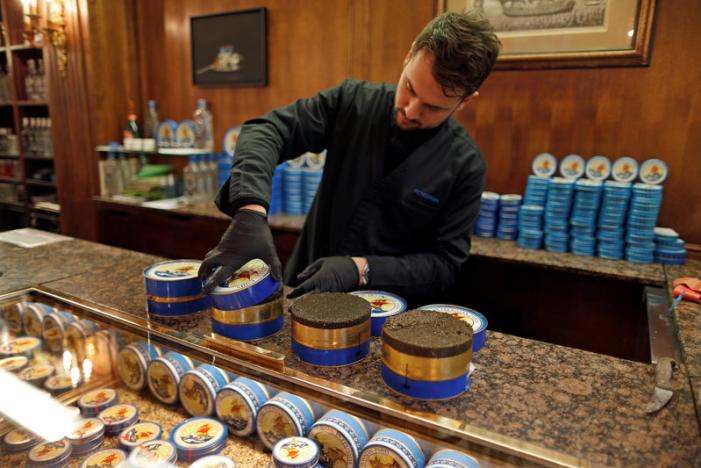December 23, 2016

A surge in production and cut-price deals from supermarkets are bringing caviar to the mass market. But it’s not Caspian caviar and it often isn’t from sturgeon.
But that doesn’t bother Petrossian, one of the world’s oldest and largest caviar specialists, which sells the delicacy from its oak-walled boutique near the Eiffel Tower in Paris.
“The more people eat caviar the better,” says mustachioed owner Armen Petrossian, son of the brand’s Armenian founder.
“Then they can tell the difference between high-quality and lower quality caviar,” he says, amid a steady stream of phone calls from customers placing orders ahead of Christmas.
Petrossian’s 30-gram tin of Chinese caviar costs 54 euros ($56) and’its Bulgarian Beluga “Special Reserve” goes for 384 euros ($400).
At the start of this month, German discount supermarket Lidl offloaded thousands of 15-gram tins of Italian caviar for just 9.99 euros ($10.40) apiece.
Petrossian says prices of caviar have halved over the past five years due to a jump in production.
Once dominated by the Soviet Union and Iran, sturgeon farming has spread to countries from Switzerland to Vietnam, and from the United States to the United Arab Emirates.
World output, just over 100 tons around five years ago, is now more than 250 tons and is set to reach 500 by 2020, says Philippe Chauvin, head of the Comptoir du Caviar chain, citing data from the International Caviar Importers’ Association.
Iran produced only 2.2 tons last year and expects 3.0 tons this year, all from farmed fish along the Caspian coast. Iran used to produce in excess of 300 tons annually in the 1980s before the sturgeon largely died off in the Caspian from overfishing after the Soviet Union collapsed and fishing enforcement ceased.
“Many investors have plowed money into this business thinking it was the goose with the golden eggs, but in fact, profitability is not the same as it was five years ago,” says Laurent Dulau, chief executive of Sturia, France’s leading caviar producer.
Market experts predict consolidation among producers, which now total more than 100 against a handful two decades ago—with the big fish eating the little fish to preserve margins.
Caviar-bearing fish are now found in several American rivers, including the Hudson in New York. But not all are sturgeon. A major source of caviar in the United States is paddlefish.
A major source of sturgeon four centuries ago was the Chesapeake Bay, where John Smith, a founder of the Jamestown Colony in Virginia in 1607, said the sturgeon were so plentiful they would leap into his boat. The sturgeon were all fished out of he Chesapeake by the 19th Century and have never returned.
























